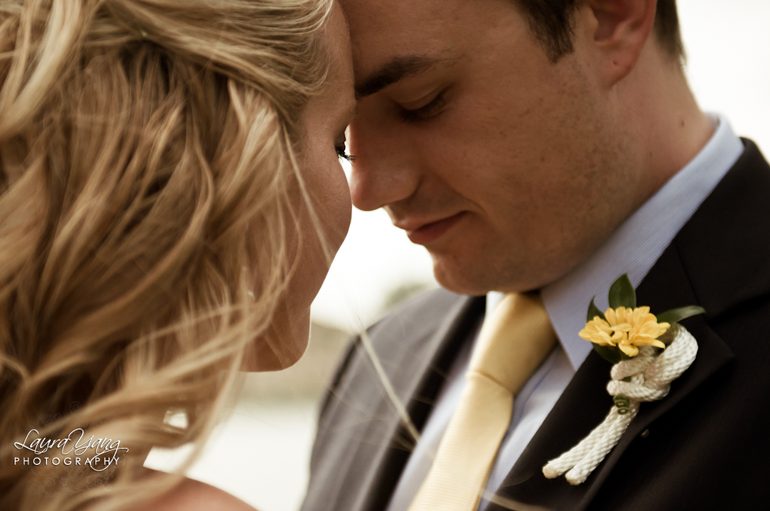Today, I’m going to finish organizing Kim and Darin’s wedding pictures. Looking through them, I feel all warm and fuzzy as the day springs to life again: Kim dancing with her dad, misty-eyed; the happy couple wandering Yacht Harbor Village in their first minutes as husband and wife. But I also feel all warm and fuzzy looking through these pictures because the picture-taking itself is such a good memory. It went incredibly smoothly because Kim and Darin were willing to work with us to create a Wedding Day Photography Timeline. Over the summer, Danny and I decided that’s something we will never again shoot a wedding without. In fact, we feel so strongly about its importance that we’ve written it into our contract.
Why? Look at it this way: Would you head into your wedding day not knowing what was going to happen when? What time the bride would show up to get her hair and makeup done? When the ceremony would start? Most couples create a wedding timeline, and most planners will flat-out insist on one. It’s just common sense that having a schedule — even if you don’t stick to it scrupulously — will help the wedding day unfold at the right pace and ensure nothing gets overlooked in the excitement.
That’s what a Wedding Day Photography Timeline does. The way we build one is simple. First, we find out how many family members and how large a bridal party a couple has, so we can determine about how much time we need to allot to formal portraits. Then we find out if the couple or event planner have already created a wedding timeline. If they have, we work around that; if they haven’t, we start from scratch with the couple, sharing our advice about how much time we need for family portraits, bride and groom photos, and finding out if they want to do a first look (see each other for photos before the ceremony), etc. We work with the couple to decide when during the day each segment of photography will fit best. Kim and Darin were a dream to work with when it came to the Wedding Day Photography Timeline — after we finalized it, they forwarded it to their family members so everyone would know when and where they needed to be for pictures, and they worked diligently to make sure everyone stuck to the timeline. And we did, which meant their wedding unfolded at the pace they had planned, and the photography didn’t get in the way of their party — or get overlooked. Because, after all, our goal as photographers is to record all of a couple’s memories of their wedding, but we don’t want to do that at the expense of letting them enjoy their wedding.
Here’s a sample of the timeline from Kim and Darin’s wedding:
5:30 / Ceremony
5:30 / Ceremony photos – all candid, photographers discreet
6:00 / Bride and groom exit yacht – candid portraits
6:05 / Bride and groom portraits along RIVER, MARINA
6:35 / Bridal party portraits along RIVER
6:50 / Family portraits on SUNDANCER STERN or DOCK
7:00 / Begin Sailing
7:00 / Bride and groom portraits on SUNDANCER BOW
It’s not complicated, but as a photographer, it’s a huge relief to have a photography schedule in your back pocket right next to your shots list, and to know that the bride and groom are making an effort to help you help them; for the bride and groom, I know this is a an extra layer of assurance that they’ll have time to get great, memorable wedding day images — without spending their entire wedding day to get them. And great, memorable images are what we got with the camera-ready Kim and Darin.
 Kim and Darin’s full wedding blog post will be up later this week.
Kim and Darin’s full wedding blog post will be up later this week.
For more information about the importance of Wedding Day Photography Timelines and how to create them, see Elizabeth Etienne’s chapter on the topic in her wonderful book Profitable Wedding Photography (Allworth Press, 2011), which was what initially convinced me that a Timeline is essential for any wedding photographer who takes her work seriously.
And if you’ve got any stories or insights about why a Timeline is helpful, or have any tips on how to create them, please share!
~ Laura
Be the first to comment